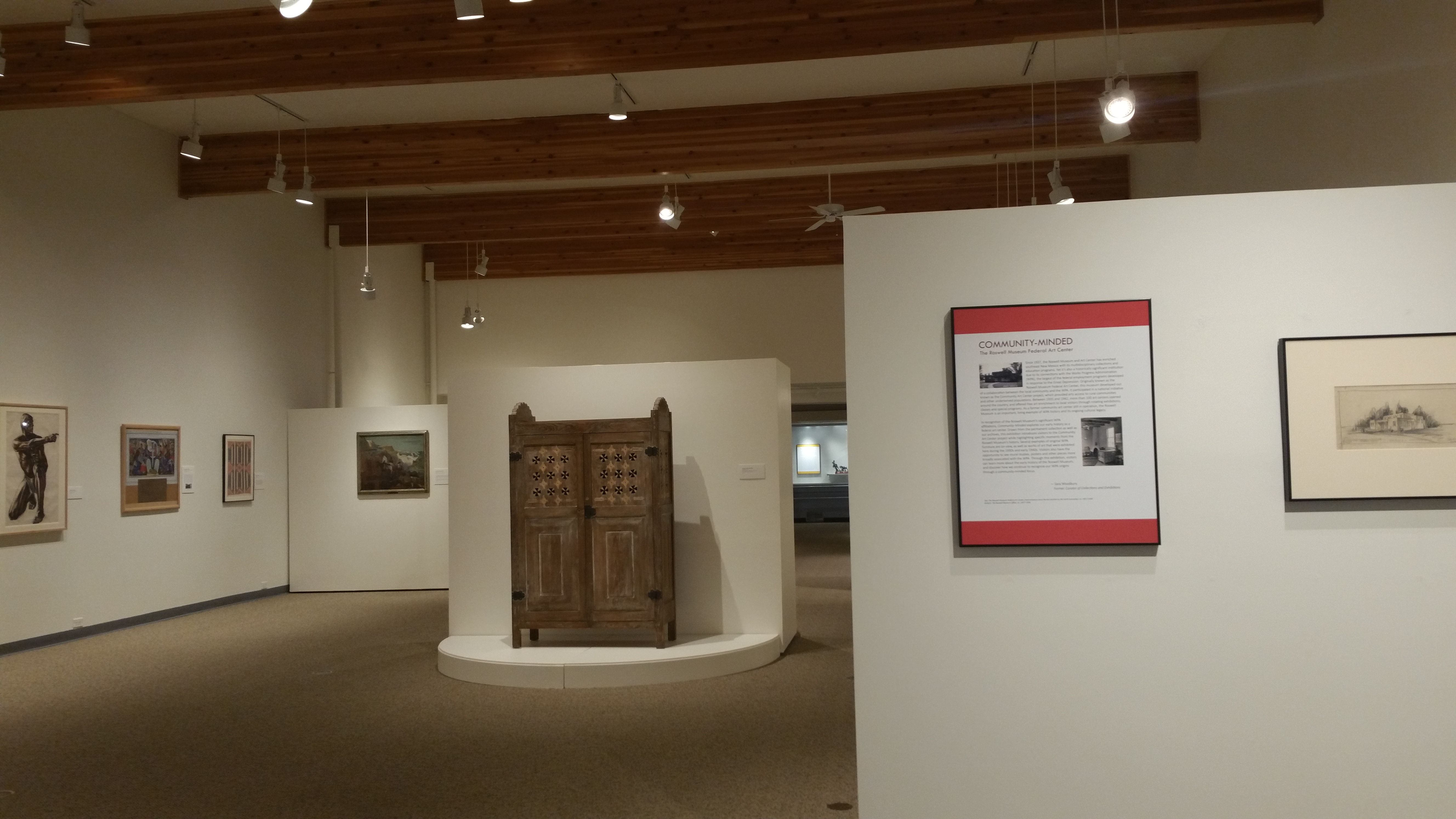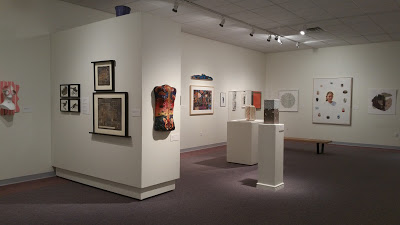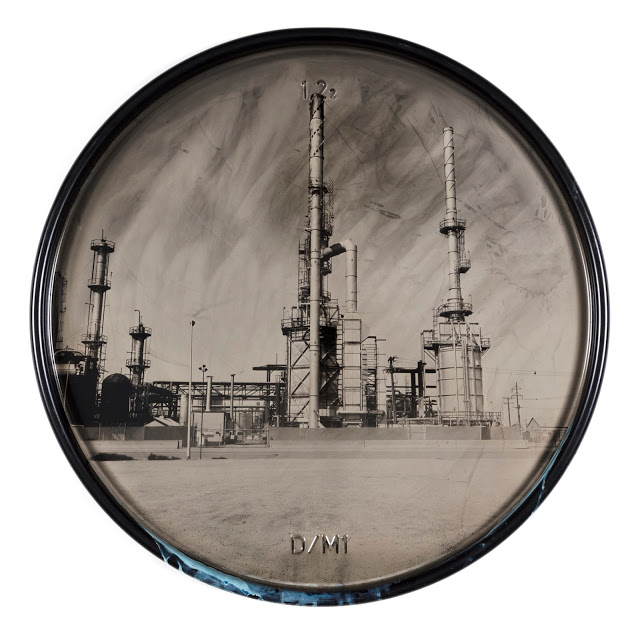As a dedicated museum professional, I have more than a decade of experience in exhibition curation, collections research, writing, and public engagement. I am currently the Curator of Art at the Barry Art Museum at Old Dominion University, and have held curatorial positions at the Roswell Museum, Shelburne Museum, the Dallas Museum of Art, and the National Museum of Wildlife Art. My portfolio includes more than forty original exhibitions focusing on American art and material culture.
My curatorial practice has two primary objectives: to invite visitors to engage with works of art, and to encourage collaboration. I believe that every visitor, from casual visitors to experts, can and should experience art in a profound and significant way. Through my skills in art history, writing, public speaking, and exhibition design, I encourage visitors to produce their own meanings through engaged looking and historical contextualization.
In my actual working methods, I embrace collaboration. Whether I work with artists, museum personnel, or volunteers, I practice listening, giving all participants the space to share ideas or suggestions, and acknowledging the labor of all contributors.
Below are highlights from my exhibition portfolio.
Message in a Bottle: Picturing Maritime Culture at Hampton Roads

April 12, 2024-January 5, 2025, Barry Art Museum at Old Dominion University
Organized as a call and response between past and present, this exhibition considers the rich and complicated maritime histories of Hampton Roads by pairing historical maritime paintings with contemporary art from ODU faculty members and other regionally and internationally recognized artists.
Gallery




The Doll as Art

Permanent collection reinstallation, on view beginning August 31, 2022, Barry Art Museum at Old Dominion University
This reinterpretation of the Barry Art Museum’s doll gallery had three objectives: to reduce the number of dolls on view to allow for conservation rotations; to engage museum visitors with the doll collection beyond specialists and collectors; and to create a more intentional rotating gallery within the space to accommodate temporary shows. I reconfigured the gallery from a chronological layout to a thematic one to engage audiences beyond collectors and specialists. The four themes include the following: technology, fashion, culture, and art. I also relocated the temporary gallery to the center of the space.
Gallery




Rhonda Holy Bear: Artist and Story-Keeper

August 30-December 31, 2022, Barry Art Museum at Old Dominion University
This exhibition highlights the work of Rhonda Holy Bear (Cheyenne River Lakota). Renowned for her exquisite sculpture, Holy Bear engages in the indigenous tradition of dollmaking, using painstaking micro-beading and other meticulous processes to create her intricate, highly detailed works. These pieces convey far more than technical virtuosity, they are also visual storytellers. This exhibition explores the artist’s creative practice through an intimate selection of her works throughout the past 30 years of her career.
Gallery

Motion/Emotion: Exploring Affect from Automata to Robots

February 10-December 31, 2022, Barry Art Museum at Old Dominion University
This exhibition investigates the emotional qualities of automata and robots by pairing the Barry Art Museum’s historical automaton collection with the work of contemporary artists and scientists. By highlighting the intersections between art, science, and emotion, this exhibition seeks to connect the Barry Art Museum’s historical automata to 21st-century interests while also asking how robots can help us better understand our own humanity.
Installation photographs by John Wadsworth.
Gallery




Magical and Real: Henriette Wyeth and Peter Hurd

January 21-May 6, 2018, James A. Michener Art Museum; June 15-September 16, 2018, Roswell Museum, Co-Curated with Kirsten M. Jensen
Henriette Wyeth and Peter Hurd are two of southeast New Mexico’s most significant artists. Co-organized with the Michener Art Museum in Doylestown, Pennsylvania, Magical & Real is the first scholarly exhibition to seriously consider the work of either artist in thirty years, and aims to resituate their work within the broader context of 20th-century American art. The exhibition includes approximately 100 paintings, and is accompanied by an illustrated, scholarly catalogue.
I worked on the Peter Hurd part of the exhibition, while Kirsten M. Jensen concentrated on Henriette Wyeth.
Gallery




Community-Minded: The Roswell Museum Federal Art Center

August 4, 2018-May 26, 2019, Roswell Museum
This exhibition explores the Roswell Museum’s origins as a Federal Community Art Center. Highlights include surviving examples of the museum’s original WPA furniture, as well as several works of New Deal-era art from the permanent collection.
Community-Minded object labels
Gallery




RAiR at 50: Beyond the Gift of Time

October 6, 2017-April 6, 2018, Roswell Museum
The Roswell Artist-in-Residence Program (RAiR) is one of southeast New Mexico’s most significant cultural organizations, providing artists with free housing, studio space, and a living stipend for a year’s time. RAiR at 50: Beyond the Gift of Time celebrates this program’s milestone anniversary by featuring new works by more than 170 RAiR alumni from around the world.
Gallery




Power: New Works by David Emitt Adams

January 13-May 28, 2017, Roswell Museum
Arizona-based photographer David Emitt Adams explores the intersections between landscape and culture through the use of historical photographic processes. Printing his landscapes on discarded cans, scrap metal, and other detritus, Adams emphasizes the intertwined relationship between civilization and the natural environment. In Power, Adams considers the ongoing, ambivalent legacy of the oil industry.
Gallery




The Art of the Book

September 9, 2016-January 1, 2017, Roswell Museum
What is a book? Chances are we would imagine an object containing written text. Yet the book is also a versatile art form, and many artists have embraced its historical function as a means of communication for creative ends. The Art of the Book explores contemporary book arts in New Mexico, with 10 featured artists presenting different interpretations of the book as both a physical object and means of visual expression.
Gallery




Currents: New Media New Mexico

June 15-September 16, 2016, Roswell Museum
Currents: New Media New Mexico is an exhibition occurring in partnership with Currents, an international new media festival that takes place in Santa Fe each June. Synthesizing art and technology, new media encompasses film, sound, animation, and other concepts that push our understanding of creative expression.
Gallery





A Solid Green Mess: Howard Cook’s World War II Drawings

November 6, 2015-February 1, 2016, Roswell Museum
“A solid green mess,” is how artist Taos artist Howard Cook (1901-1980) described the jungles of the South Solomon Islands in July 1943. As a correspondent in the federal War Art Program, Cook depicted World War 2 in the Pacific Theater, sketching combat, recreation, and other facets of military life. This exhibition explores Cook’s war art through a selection of his sketches, paintings, and letters.
Gallery




Signe Stuart: Fifteen

October 2, 2015-March 20, 2016, Roswell Museum
Signe Stuart is an abstract artist whose diverse works represent an ongoing process of negotiation and experimentation between ideas and materials. Signe Stuart: Fifteen considers the changes and continuities that have shaped her artistic investigations. The show features fifteen works created in fifteen different years, allowing visitors to observe the evolution of her art through time.
Gallery




Guitars from Club Muse: Roger Sweet

August 22, 2015-January 17, 2016, Roswell Museum
Based in Jemez Springs, New Mexico, artist and musician Roger Sweet has spent over three decades creating twenty-four sculptures out of guitars. The result is a distinct body of work that uses this instrument’s enduring popularity to explore different ideas, from the repercussions of the Cold War to the history of art.
Gallery




Color, Pattern, Whimsy, Scale: The Best of Shelburne Museum

August 18-December 21, 2013, Shelburne Museum, co-curated with Jean Burks, Kory Rogers, and Tom Denenberg
The inaugural exhibition for Shelburne Museum’s first year-round building, the Pizzagalli Center for Art and Education. Centered on color, pattern, whimsy, and scale, the four qualities museum founder Electra Havemeyer Webb used as a collector of American material culture, each co-curator selected and interpreted a group of objects from the permanent collection highlighting one of these qualities. I curated the section on whimsy.
Gallery


The Art of Peril: Fires, Shipwrecks, and Other Disasters

June 22-October 31, 2013, Shelburne Museum
Natural disasters have always enthralled humanity, but during the 19th century, lithography, photography, and other technological advancements made images of catastrophe more readily available than ever before. This exhibition explores our fascination with disaster through a selection of prints, photographs, and other objects.
Gallery


How Extraordinary! Travel, Novelty, and Time

June 14-October 28, 2012, Shelburne Museum
This exhibit addresses the concept of novelty in 18th and 19th century America and Europe. The first section looks at real and imaginary travel, as artists endeavored to introduce new places to their audiences. The second section considers some of the ways in which 19th-century Americans and European visual culture incorporated novel elements, from fashion plates featuring new dyes or textile patterns, to the depiction of imported fruit in still life paintings.
Gallery



Times Machines: Robots, Rockets, and Steampunk

June 14-October 28, 2012, Shelburne Museum, Co-Curated with Kory Rogers
This exhibition explores the multifaceted role of science fiction in American popular culture through an examination of three different genres. The first section examines space travel as it evolved from a fanciful concept to a scientific reality through a selection of mid-twentieth century toys. The second section considers robots in popular culture and the ways in which they manifest our attitudes toward technology. The final section looks at steampunk and how its practitioners synthesize contemporary technologies with 19th-century aesthetics to create an alternative version of the future.
I focused primarily on the space section of the exhibition.
Gallery



